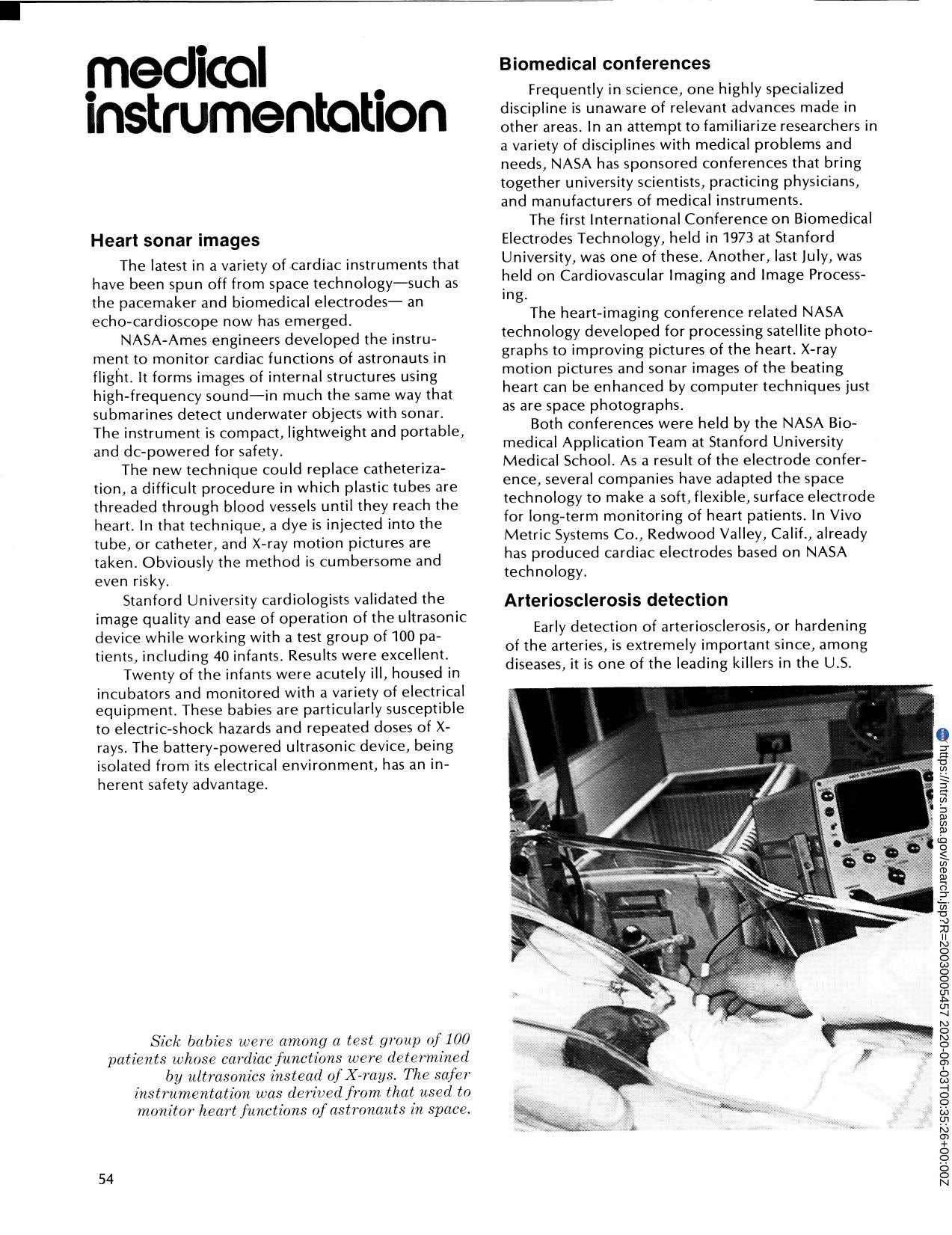
Heart Sonar Images
Originally published in 1976
Body
Stanford University cardiologists, with the help of Ames engineers, have validated the operation of the echo-cardioscope to monitor cardiac functions of astronauts in flight. This device forms images of internal structures using high-frequency sound. The instrument is compact, lightweight, portable, and DC powered for safety. The battery powered ultrasonic device, being isolated from its electrical environment, has an inherent safety advantage especially with infants.
Full article: http://hdl.handle.net/hdl:2060/20030005457
Abstract
Stanford University cardiologists, with the help of Ames engineers, have validated the operation of the echo-cardioscope to monitor cardiac functions of astronauts in flight. This device forms images of internal structures using high-frequency sound. The instrument is compact, lightweight, portable, and DC powered for safety. The battery powered ultrasonic device, being isolated from its electrical environment, has an inherent safety advantage especially with infants.

Heart Sonar Images

Heart Sonar Images













